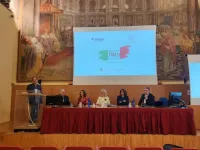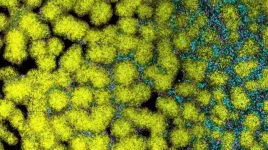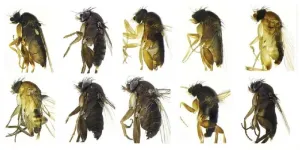(Press-News.org) Super-spy James Bond is a prime example of ‘regressive nostalgia’ highlighting how certain consumer groups cling to idealised past versions of brands and resist attempts to move with the times, a new study reveals.
Researchers examined the James Bond movie franchise - a cultural icon for over 70 years - and discovered that some ‘super-consumers’ react negatively to modern portrayals of the fictional British secret agent that reflect contemporary societal values.
Whilst loyal to the brand, these consumers prefer traditional, more exclusionary, versions of Bond which most closely follow author Ian Fleming’s original 1950s and 1960s vision – characterised as an arrogant, misogynistic, and racist Imperial British male.
Publishing their findings today (17 October) in International Journal of Research in Marketing, consumer behaviour experts from the University of Birmingham and ESCP Business School, London note that regressive nostalgia is characterised by a preference for racial and cultural purity and heroic masculinity. The phenomenon harbours exclusionary and aggressive tendencies that pose significant threats to brands.
The researchers have, therefore, produced a toolkit to help marketeers shield their brand’s contemporary positioning from the negative connotations associated with this form of nostalgia - allowing brands to evolve without alienating their core consumer base.
Finola Kerrigan, Professor of Marketing at the University of Birmingham, commented: “The James Bond franchise is a perfect example of how ‘regressive nostalgia’ manifests. Whilst the brand has successfully adapted to changing times, a small but disproportionally vocal part of its fanbase is anchored in the past, highlighting the need for careful brand management.
“These ‘super-consumers’ cling to Ian Fleming’s characterisation of Bond and the period during which the novels were written to justify their nostalgia. They actively resist attempts to modernise the franchise, dismissing as ‘woke nonsense’ recent movies such as ‘No Time to Die.”
Chloe Preece, Professor of Marketing, ESCP Business School, London notes that these Super-consumers view Bond as a heroic, white, male icon providing a ‘safe space’ for those feeling threatened by contemporary discussion about creating a more inclusive society. The character’s ‘man-of-action’ persona allows this group of mostly male consumers to identify with the spy’s ‘heroic masculinity’ based on his ability to sleep with the ‘Bond girls’.
While the study focuses on the Bond franchise, the researchers identify parallels with other groups’ appropriation of brand resources and associating them with anti-social causes.
“Brands use nostalgia to connect with consumers - delighting and enchanting their customer base whilst connecting them to others – but this makes nostalgia potentially dangerous in drawing consumers to the past, when it creates a sense of loss combining a cherished past and a despised present,” said independent scholar Dr Daragh O’Reilly.
“In order to minimise the negative impact of regressive nostalgia, it is important that the brand does not pander to the nostalgia displayed by a minority of super-consumers. Brand stewards must not be swayed by these loud voices and become exclusionary.”
The researchers note that marketeers should be alert to the risk posed by regressive nostalgia and have devised toolkit comprising of a series of questions to help brand managers assess the level of threat (see Notes to Editors).
ENDS
For more information, please contact Tony Moran, International Communications Manager, University of Birmingham on +44 (0)782 783 2312 or t.moran@bham.ac.uk. For out-of-hours enquiries, please call +44 (0) 121 414 2772.
Notes to Editors
The University of Birmingham is ranked amongst the world’s top 100 institutions, its work brings people from across the world to Birmingham, including researchers and teachers and more than 8,000 international students from over 150 countries.
‘Theorizing Regressive Nostalgia: Understanding Exclusionary Consumers as a Brand Threat’ – Chloe Preece, Finola Kerrigan and Daragh O’Reilly is published in International Journal of Research in Marketing.
Managerial toolkit to assess the threat of regressive nostalgia to a brand
What is the brand’s connection with the past?
What market research data does the brand have that supports the analysis of the brand’s relationship to the past?
Does the brand actively use the past and nostalgia in its positioning?
What does it cost the brand to sustain this connection with the past, and what is the brand benefit from doing so?
How do the brand’s consumers and stakeholders relate to the past?
What material and symbolic resources has the brand made available to consumers that relate to the past?
How are social media and other platforms enabling consumer/customer agency with respect to regressive nostalgia?
To what extent is the brand’s past copyrighted?
How easily can this past be altered, faked, or deep-faked? (considering the threats of AI)
What challenges may come from existing or historical celebrity endorsements, donations to political parties, merchandising figures, internet memes?
Given the brand’s past (imagined or real), what is the nature and scale of the threat to the brand from regressive nostalgia?
Is there any evidence of regressive nostalgia amongst consumers and if so, has this grown recently?
How might the brand’s corporate reputation be at risk?
In what way could regressive nostalgia possibly affect the brand’s strategic marketing and its marketing mix?
How can the brand mobilise inclusivity, diversity, and equality to counter regressive nostalgia if necessary?
What narrative(s) can and should be deployed, developed, adjusted, and managed by the brand to reflect contemporary positionings of the brand?
What domains and frames of reference or meaning-making are available to the brand when working with these divisive and polarizing issues?
END
License to chill: Bond shows ‘regressive nostalgia’ can freeze a brand's future
2024-10-17
ELSE PRESS RELEASES FROM THIS DATE:
Researchers from Brazil and Italy search industrial waste for new Alzheimer’s drugs
2024-10-17
A self-proclaimed Brazil-Italy collaboration enthusiast, researcher Laura Bolognesi created the B2AlzD2 Joint Lab at the Department of Pharmacy and Biotechnology of the Università di Bologna (UNIBO), the first Brazil-Bologna joint laboratory dedicated to the development of new drugs for the treatment of Alzheimer’s disease. The partners include scientists from four Brazilian universities: the Federal University of Rio de Janeiro (UFRJ), the University of Brasília (UnB), the University of São Paulo (USP Ribeirão Preto) and the Federal University of Minas Gerais (UFMG).
One of the laboratory’s ongoing ...
BU, Boston Medical Center researchers join forces with GSK to fight lung diseases
2024-10-17
(Boston)—Researchers from the Center for Regenerative Medicine (CReM) at Boston University and Boston Medical Center (BMC) have announced a new collaboration with the global biopharma company GSK to advance innovative research focused on developing cutting-edge models to study and treat lung diseases like pulmonary fibrosis.
Pulmonary fibrosis, including its most common form, idiopathic pulmonary fibrosis (IPF), is a progressive and life-threatening condition that results in scarring of the lungs, making it increasingly difficult for patients to breathe. ...
Bacteria thrive by playing nice before going their own way
2024-10-17
Biofilms — slimy communities of bacteria — grow on all sorts of surfaces: from glaciers and hot springs to plant roots, your bathtub and fridge, wounds, and medical devices such as catheters. Most biofilms are composed of multiple bacterial species, but how these species manage to live together is unclear.
A new study by Dartmouth scientists in Current Biology uses experiments and modeling to delve into how three species of biofilm bacteria coexist — and when they move out on their own. One species, Pseudomonas aeruginosa, a verstaile pathogen known to be antibiotic resistant, dominated ...
Identifying the genes that viruses ‘steal’ from ocean microbes
2024-10-17
COLUMBUS, Ohio – The microbes that cycle nutrients in the ocean don’t do the work on their own – the viruses that infect them also influence the process. It’s a vital job for the rest of the planet, enabling oceans to absorb half of the human-generated carbon in the atmosphere and produce half of the oxygen we breathe.
A new study gets scientists closer to more fully understanding where viruses fit into the global ocean picture of cycling nutrients such as nitrogen, phosphorous and, of particular interest, carbon. The research broadly expands on a 20-year-old finding that genes can be exchanged between viruses and the photosynthetic ...
CDC/PEPFAR awards Georgetown $27.5 million to address HIV/AIDS in Haiti
2024-10-17
WASHINGTON (Oct. 17, 2024) -- The U.S. Centers for Disease Control and Prevention (CDC) and the President’s Emergency Plan for AIDS Relief (PEPFAR), have awarded $27.5 million to the Center for Global Health Practice and Impact (CGHPI) at Georgetown University Medical Center to expand its ongoing work in Haiti to address HIV/AIDS.
For the 150,000 people in Haiti living with HIV, losing access to basic life-saving therapy can lead to unnecessary suffering, risk of transmission to others, and ...
Found hundreds of species using DNA barcoding
2024-10-17
The Earth is an almost unimaginably diverse planet in terms of species. Researchers have identified between two and three million species, but there are many more that we know nothing about.
The unknown species are called ‘biological dark matter’, borrowing a term from astrophysics.
“We want to demonstrate how we can gain a better overview of biological dark matter by using DNA barcoding,” said Associate Professor Emily Hartop.
DNA barcoding, in this case so-called ‘megabarcoding’, might sound mysterious, but it isn’t really. We will come back to that later. First, let us take a look at why ...
Unpaid caregiving is undervalued by society
2024-10-17
WASHINGTON — Americans believe volunteering to help strangers contributes more to society than providing care for family or friends, even though they contribute billions of dollars’ worth of labor in unpaid caregiving every year, according to research published by the American Psychological Association.
This perception could lead Americans of lower socioeconomic status to feel like they have less to contribute than people of higher socioeconomic status, because they often do not have the same amount of time or resources to devote to people outside of their communities.
“Over ...
AI helps to detect antibiotic resistance
2024-10-17
Researchers at the University of Zurich (UZH) have used artificial intelligence (AI) to help identify antibiotic-resistant bacteria. The team led by Adrian Egli, UZH professor at the Institute of Medical Microbiology, is the first to investigate how GPT-4, a powerful AI model developed by OpenAI, can be used to analyze antibiotic resistance.
The researchers used AI to interpret a common laboratory test known as the Kirby-Bauer disk diffusion test, which helps doctors to determine which antibiotics can or can’t fight a particular bacterial infection. Based on GPT-4, the scientists created the “EUCAST-GPT-expert”, which follows strict EUCAST ...
Scientific conference series aims to improve outcomes for diabetes, cancer and cardiovascular disease
2024-10-17
WASHINGTON—The Endocrine Society, a global organization that promotes endocrinology research and clinical practice, and Keystone Symposia, a nonprofit host of conferences and symposia on a range of life science and biomedical topics, will jointly host a series of three conferences to advance endocrine research.
The three conferences will focus on diabetes, oncology and cardiovascular disease—hormone-related conditions that have a major impact on public health. The conference series is slated to launch in late 2026 or early 2027 and will run ...
Quantum research breakthrough uses synthetic dimensions to efficiently process quantum information
2024-10-17
Quantum research breakthrough uses synthetic dimensions to efficiently process quantum information
The discovery, at INRS, of a synthetic photonic lattice capable of generating and manipulating quantum states of light, offers promising prospects for a variety of applications, from quantum computing to secure quantum communication protocols.
A study co-directed by Professor Roberto Morandotti of Institut national de la recherche scientifique (INRS) in collaboration with teams from Germany, Italy, and Japan opens the door to cutting-edge solutions ...




